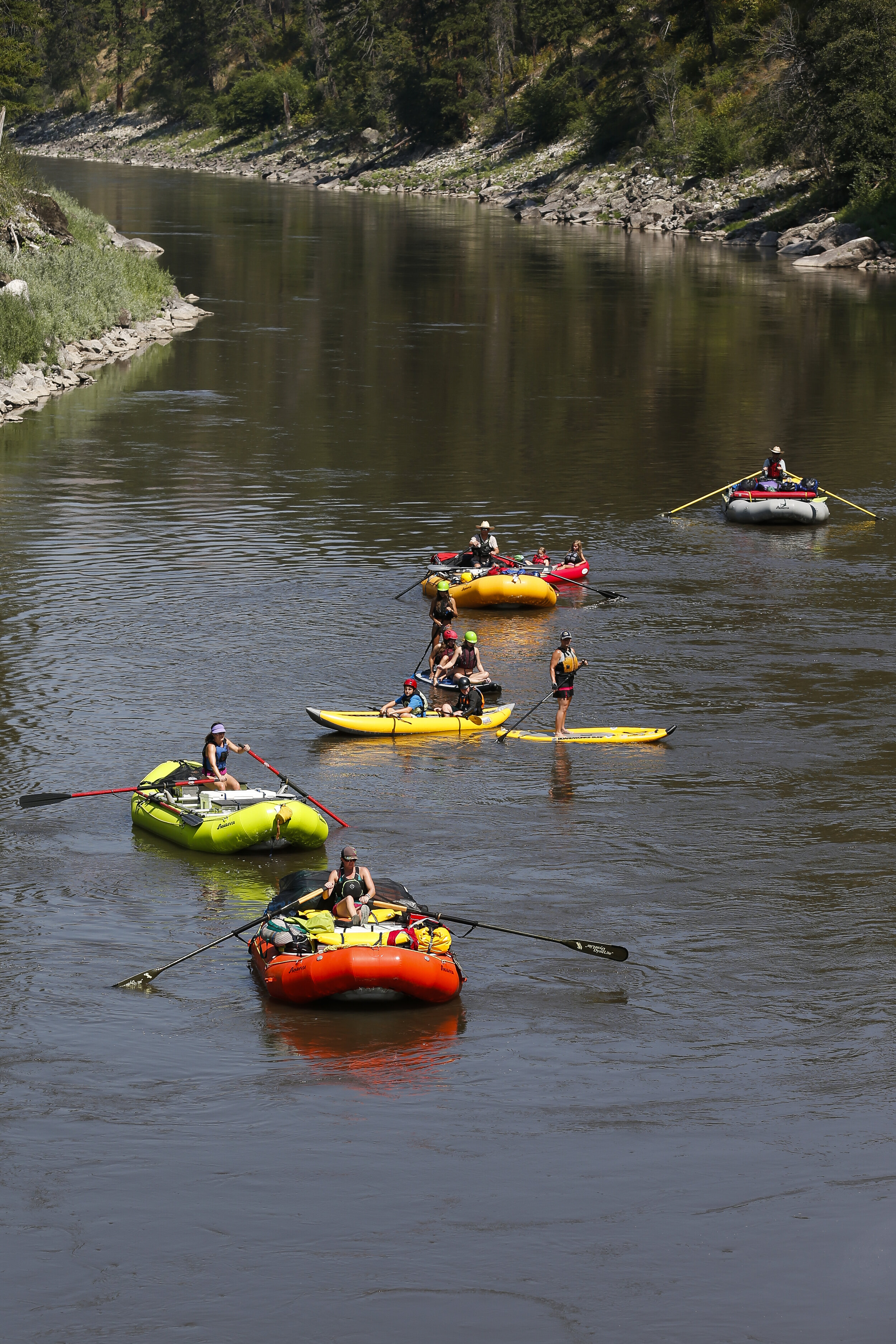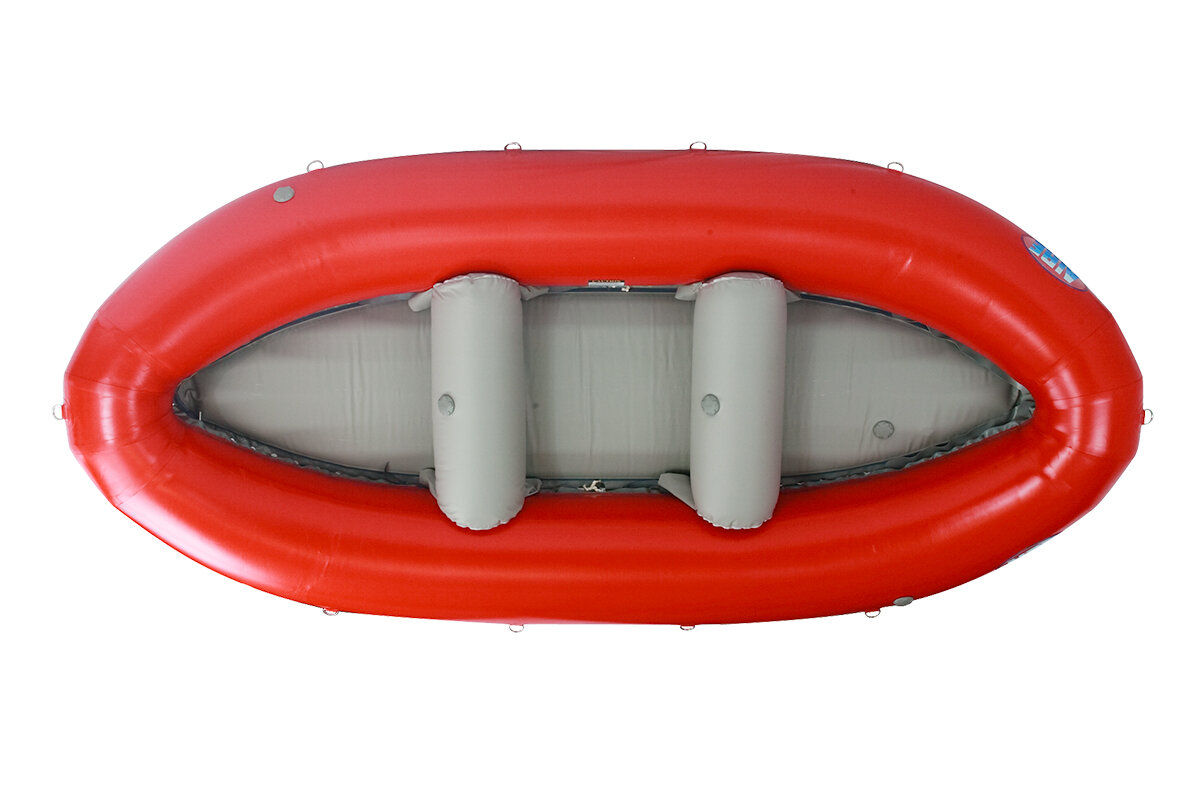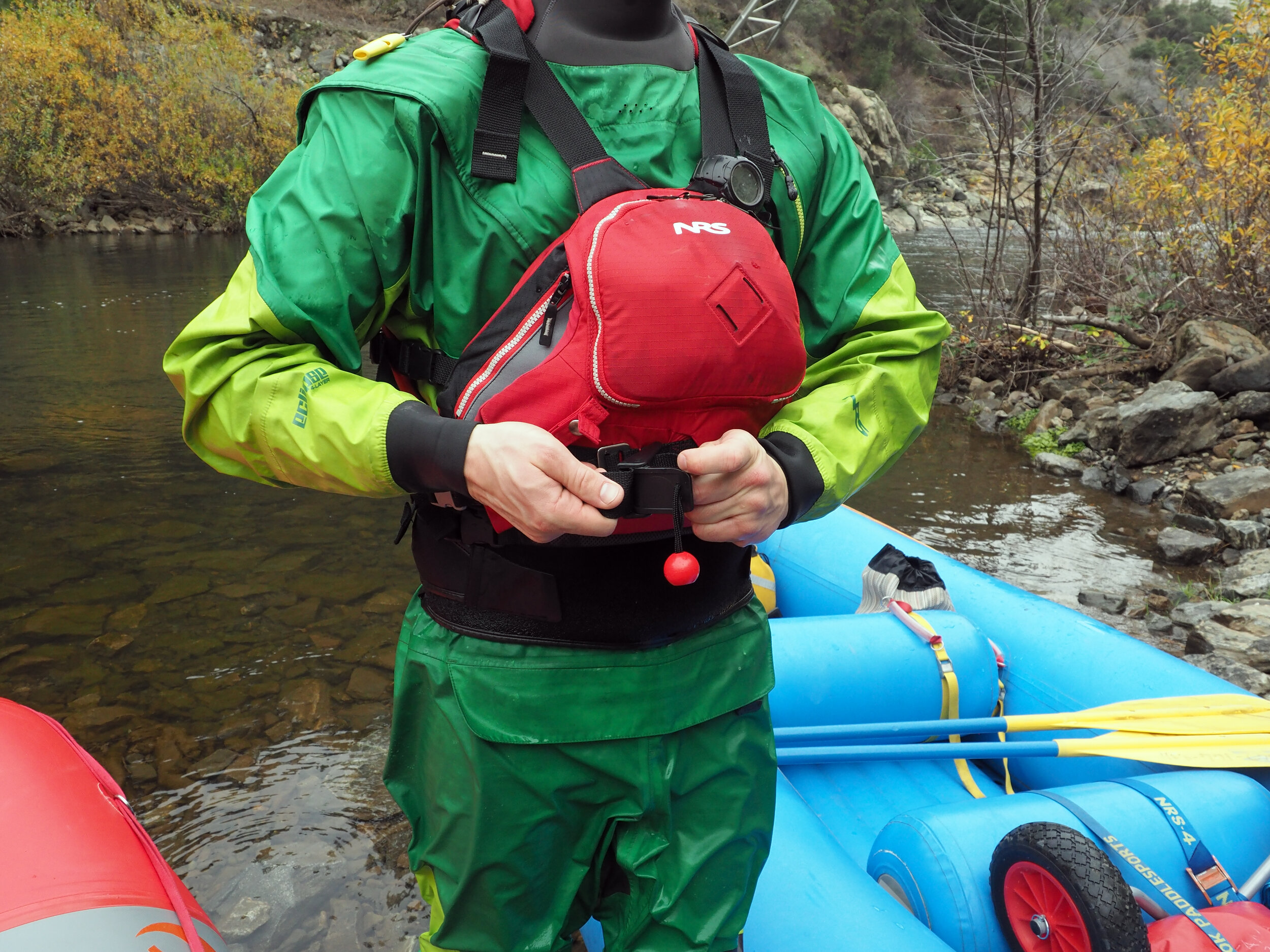Should We be Classifying Rafts?
Kayaking has taken an interesting trend over the years by classifying boats. Given the crossover of many paddlers between these sports it is surprising that rafting hasn’t picked up the stratification of boat classes into broad categories. As we get more experienced with a topic we require greater degrees of specificity to describe similar yet functionally different concepts. So, we thought we would take a crack at some boat classification for rafts.
How does classifying rafts help?
We get a ton of questions about what boat to take out in which river. Different boats have very different performance characteristics. Everyone has their preference for style of boat and different regions will see greater popularity from different designs due to local conditions.
One of the more particular parts of our industry is that boat design and popularity varies regionally since rivers in different geological zones are slightly different despite the fact that water tends to create similarly predictable features in general. A good thing to pay particular attention to is how the locals boat and customize their boats.
Raft classifications
It’s important to note that not every raft fits perfectly in each category. While you can certainly get down a big water section of river in a play boat, it may not be the most enjoyable experience as something like that can leave you pretty exposed. Here are our thoughts on how to categorize rafts generally. You can click the links below to take you to the gear shed to see more about what’s out there on the market.
Creek Boats
River Runners
Big water boats
Gear boats
Outside of these categories there are a few specialty categories that we haven’t covered like J-rigs and sweep boats as they tend to be less common, especially for the average boater. Also we are not covering catarafts in this piece as we would like to cover those crafts in a separate article.
Play boats
Kayakers have play boats and so do rafters. If you want to head out to the local back yard run and make it a little more spicy this is the boat class for you. Play boats are typically 9.5 – 11 feet in length and super narrow. Tube diameter is typically in the 17-19 inch range. Many of these boats have diminishing tubes and are a 2 thwart design. The width (or beam) of the raft is often very narrow at less than 6 feet.
These boats have seen a surge in popularity in the last 5 years as they are compact, low weight, low cost, and super fun to r2. Price points are generally under $2000 and an economical choice for a couple buying their first boat together. The boats in general are super easy to move and fun to paddle. Diminishing tube designs make these boats super agile and easy to surf as it lowers the drag profile of the floor and optimizes flow across the tubes. Typically a weight range under 70 lbs makes for the best experience in one of these boats.
The downside to this is that play boats are by their very nature super flippy. The narrow width makes them go right over when they get surfed, turn sideways in a big wave, or when you move quickly to the other side of the boat. Their ease of surfing can be a drawback if there are a lot of holes in rapid succession. These boats are also super slicey to borrow a kayak term. Play boats can cut into currents very well, but they can also flip on a strong eddy fence quickly if you don’t know how to handle the boat properly.
Ultimately the style and design of the boat makes it more fun if you have a higher skill level. An experienced boater can do a lot with this boat while a newer boater may feel very unstable in this boat. The other particularity of play boats is that although they can boof extremely well with a good crew, they are often too short to properly bridge a larger drop. Many paddlers often complain that boats this short will flip roll or turn sideways easily on drops over 10 feet in height. To get the most out of it you should have a solid understanding of both reading water and weight management in a raft.
Popular play boat designs on the market
Lil’ Wave - Maravia
Creek boats
Creekers are probably the most generally fun all around boat. Creek boats are typically 11.5-12.75 feet in length. These rafts often have a narrow beam (under 6 feet in width) to accommodate lots of rock dodging and slipping through slots. Tube diameter varies quite a bit, but tubes are typically in the 18-20 inch diameter. Diminishing tubes are popular in these designs and reduce stability, but increase rotational agility. Typical creek boats are 2 thwart designs and are optimized for R2ing. Oar rigs or r4 set ups are less common here as the boat is more agile in an oar rig and can accommodate 4 paddlers.
These boats are often considered some of the most fun boats on the market. They are decent at most things and work well for a variety of trips. Creek boats come into their own on low volume steep creeks often less than 1000 CFS and greater than 100 FPM gradient. Stability is often pretty good in these boats even in surfs, but big holes can still offer up a beating. The main advantage is the length makes the boat easy to turn and the width makes it super agile. Weight is also an advantage with a creek boat since they are often near but rarely over 100 Lbs.
Some people prefer a little larger tubes for more flotation and to sit higher in the water. Depending upon the rocks you boat on and boat materials this could help you slip over rocks more easily as the boat has less draught, but you run the risk of having more surface area of a tube to catch on rock.
Creek boats still don’t perform super exceptionally well in big water conditions. If you are used to commercial rafts or big water runs this kind of raft will feel pretty flippy and exposed. Creek boats can also be tight for an r4, but you have plenty of places to hide in an r2. Rowing can be fun in these boats, but again they are smaller boats and sitting so high up can adversely affect you center of gravity.
Popular creek boat designs on the market
River Runners
These are your classic all around get it done raft at 13 – 14.5 feet. In general this boat is basically the workhorses size of the commercial rafting world. These boats are generally between 6 and 7 feet in width with tubes in the 20 – 22 inch range. Most setups are 3 thwart designs. They are highly stable platforms, especially as they get wider, and have a lot of flotation to haul heavy loads. Boats of this class weigh in at 100-150 lbs. depending upon the manufacturer and features you want on it. River Runners are a good choice for both oar and paddle setups.
This boat will handle most things you throw at it as most of the boats of this size on the market were designed for commercial use. You can find a boat of this class on most rivers in the world. You can easily carry 6 paddlers, but up to 12 in a pinch (extreme scenario we know). For smaller crews with an oar frame this class of boat is great for shorter multi days. It is serviceable as a gear boat, but it starts to be less ideal when you are talking a lot of gear on a multi-day. Overnighters or 3 days are great in a boat of this class since you can easily row enough gear for a small group and have plenty of room for everything you want to bring.
This kind of boat suffers a bit in creeks and when you are r2ing. The weight is a little prohibitive for small paddlers r2ing since carrying the boat is rough and it suffers in terms of acceleration on the water with only 2 people. Smaller models can work, but the length can make it hard in creeky technical whitewater. The boat often takes big surfs reasonably well. Similarly this class of boat is a little small and unstable for truly big water rivers like much of the Colorado, Zambezi, Nile, or Ganga rivers.
Popular river raft designs on the market
Big Water Rafts
These boats really shine when you have huge amounts of water in the tens of thousands of CFS or higher. Boats in this class are most often in the 15-18 foot range and a width of about 7-8 feet. Tube diameter is in the 22 -24 inch range. This boat will haul a massive amount of gear on multiday trips or tons of paddlers. It’s not uncommon to see a boat of this class carrying 10-12 people on a big water day trip. This class of boat typically weighs in the 150 – 200 pound range.
Photo Credit: Northwest Rafting Company
The volume of water these boats often navigate requires a lot more stability and power so this is what these boats are built to handle. They are ultra-stable barges that can push a ton of weight down the water and float super well. These boats sport tons of thwarts and are great platforms for gear when properly equipped with an oar rig. These boats do a great job in huge volume rivers and runs with big holes or massive waves. The massive amount of drag in these boats can be a blessing if the water is fast moving and you hit large wave or a hole since these boats can get a freight train worth of momentum behind them.
These boats are not designed to handle creeks as they are way to big to fit in a smaller watershed. Moderate volume rivers are even a challenge with this kind of boat. The sheer weight makes a pin or a flip a pain, especially if you are hauling a lot of people or gear. These boats also suffer from slow acceleration in a paddle raft configuration. They are much more effective in an oar/paddle combo with a stern mount or an oar only set up. Weight is another major concern as a small crew would have trouble moving this boat as it has a ton of drag in the water. These boats are much less common for the average river that folks are running, unless you are in an area with a lot of big water.
Popular big water boat designs on the market
Gear Boats, J-rigs, and Sweep Boats
We won’t be covering this topic in depth in this piece but we wanted to add a note on j-rigs and sweep boats, if you are unfamiliar with the design of these two types of craft. These rafts are very uncommon in the industry as a whole. These boats are generally relegated to commercial use on huge volume rivers. These rafts are huge in both length and width as well as cargo capacity.
J-rigs are generally fitted with rear motors and can take a lot of people and gear on the water.
Photo Credit: Kumsheen Rafting
A sweep boat is an odd looking tom sawyer style boat composed of 2 multi-section pontoons and a large load bearing deck. Special oars are fitted on the bow and stern of the boat to help guide the boat with 2 rudders.
Photo Credit: Northwest Rafting Company
Again these are special use boats and the majority of boaters will likely rarely encounter them let alone operate one on the water as they require a bit of special training above and beyond that of your average guide.
Important considerations for boat shapes
Boat shapes play a critical role in how a boat is going to perform and where it will work best. We want to cover this more extensively in some follow up articles, but for now we wanted to mention it as part of the discussion. Rafts generally have 2 shapes standard tubes and diminishing tube boats.
Standard Tube Rafts
Standard tubes have a uniform diameter across the entire outer tube. This is the more traditional design of rafts and it certainly has its advantages in many scenarios. These boats tend to have more stability since the beam is more uniform in width throughout the boat helping to combat flippiness. This characteristic of the boat also increases storage capacity by creating more internal room. This is why the design is popular with outfitters or on multiday trips since you can carry more gear and people. The blunted bow can help to slow the boat down on steep slides making any hits a little less hard. This characteristic also can help to make hits softer or prevent flipping off walls if your angle is a little off on impact.
The blunted point does have the tendency to bounce off of things like waves and holes. If you don’t have enough power to press through the feature this design is more prone to losing all of its momentum on these types of features causing loss of control. Some boaters also feel that the impact is much more violent when the boat comes to a dead stop on a rock or at the bottom of a large steep drop.
Diminishing Tube Rafts
Diminishing tube rafts reduce in diameter as you move from the midsection of the raft to the bow or stern. The popular Aire Puma or the Maravia Spider are great examples of this. One of the main advantages of this design is that there is less surface area and consequently less drag on the floor of the boat making it feel faster to accelerate, more sporty, and nimble with good rotational speed. These boats also typically have a more pointed bow compared to standard tube rafts which can help them punch waves or holes. These types of designs rotate more quickly and can feel easier to get into a surf.
This type of design often ends up being less stable since they have a more streamlined and often narrower beam in the front and back third of the boat. Some considerations boaters should be aware of about these types of designs is that they tend to deflect laterally off of strong waves or at the bottom of steep drops. The relative ease of surfing the raft can also be a double edged sword, as it can be prone to surfing when you don’t want it to.
What type of raft is right for me?
This is a tough question to answer and there is not one good answer here. We always like to use the 51% rule here. Ask yourself what type of river you run more than half the time. If you are a California boater then you might be at home on a creeker or play boat. If you are running a lot of big water in the central US then you may be more into a big water boat, or if you paddle a lot of really little UK creeks then a play boat might be more your speed.
If you are just getting your first boat, ask your boating friends, local paddling shops, or local outfitters what they typically run and most importantly why they use those boats. The same goes for if you travel to paddle. Local boaters typically have the best ideas about what works best for them in their area.
There is a common sentiment “that this is how you raft” and it can feel a little of putting if you are moving to a new region or are inexperienced. If you do encounter this kind of resistance it’s important to not take it personally. Boaters in other locations may come off sounding like you are wrong for boating your way, but really the statement should be “this is how we raft, because we feel it works best in this area”.
If you are encountering new boaters from other area, it is try to have compassion and empathy for them. It’s pretty bold of someone to travel way outside their comfort zone to go boating, especially in an area they are unfamiliar with as well as leaving them super exposed by having neither close connections nor knowing much about the area.
Always remember the best boat is the first the one you can afford and second fits what you run more than 50% of the time. If you are looking for more information on what kinds of boats are on the market you can check out the Gear Shed for more info.















